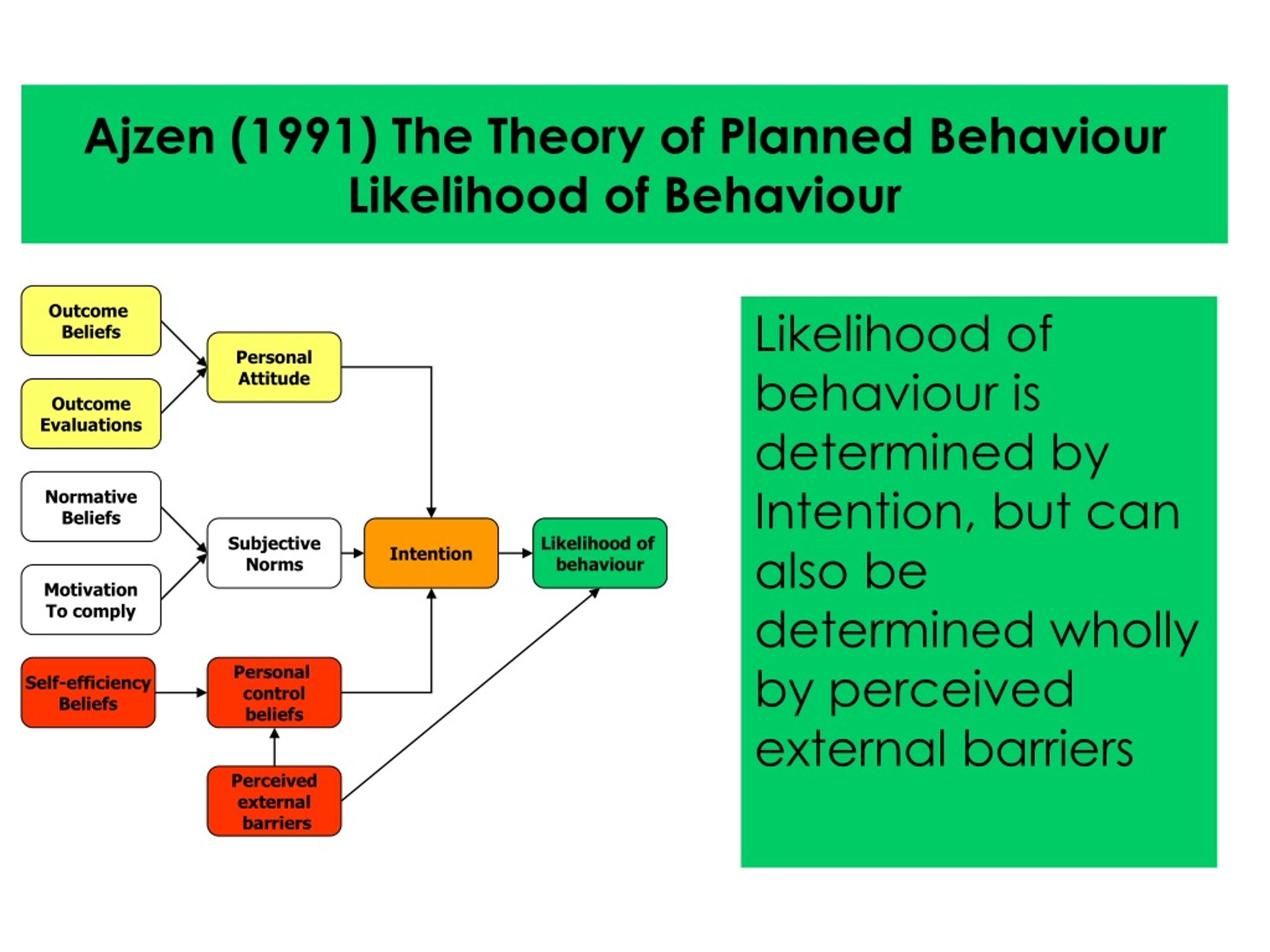
PPT Ajzen (1991) The Theory of Planned Behaviour PowerPoint Presentation ID9251083
This study aimed to systematically review and categorize studies on consumer behavior based on theory of planned behavior (TPB), its core constructs, or extensions, and to provide directions for future research agenda. Scopus and the Web of Science were consulted for studies based on TPB, its parts, or extensions.
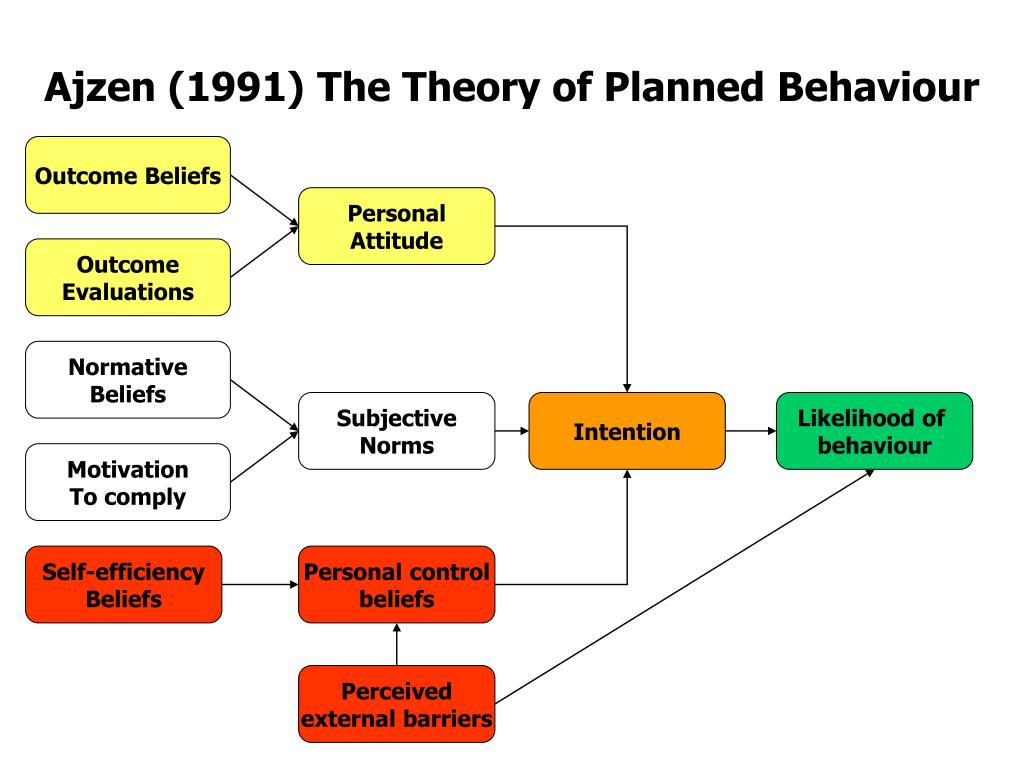
PPT Ajzen (1991) The Theory of Planned Behaviour PowerPoint Presentation ID5549150
The Theory of Planned Behaviour (TPB; Ajzen, Citation 1985), an extension of the Theory of Reasoned Action (TRA; Fishbein & Ajzen, Citation 1975), has been the dominant theoretical approach to guide research on health-related behaviour for the past three decades.The theory is well recognised amongst researchers and is also familiar to many students, practitioners and policy-makers.

Schematic of planned behavior theory Download Scientific Diagram
The Theory of Planned Behavior. The Theory of Planned Behavior (TPB) started as the Theory of Reasoned Action in 1980 to predict an individual's intention to engage in a behavior at a specific time and place. The theory was intended to explain all behaviors over which people have the ability to exert self-control.

Theory of Planned Behavior (adapted from Ajzen 1988). Download Scientific Diagram
Graphical depiction of the theory of planned behavior ( Ajzen, 2019b ). The goal of this editorial is to give a brief overview of the articles in this thematic section of Europe's Journal of Psychology, which is devoted to selected recent advances and applications of the TPB. The five contributions address two thematic streams: (1) adjustments.
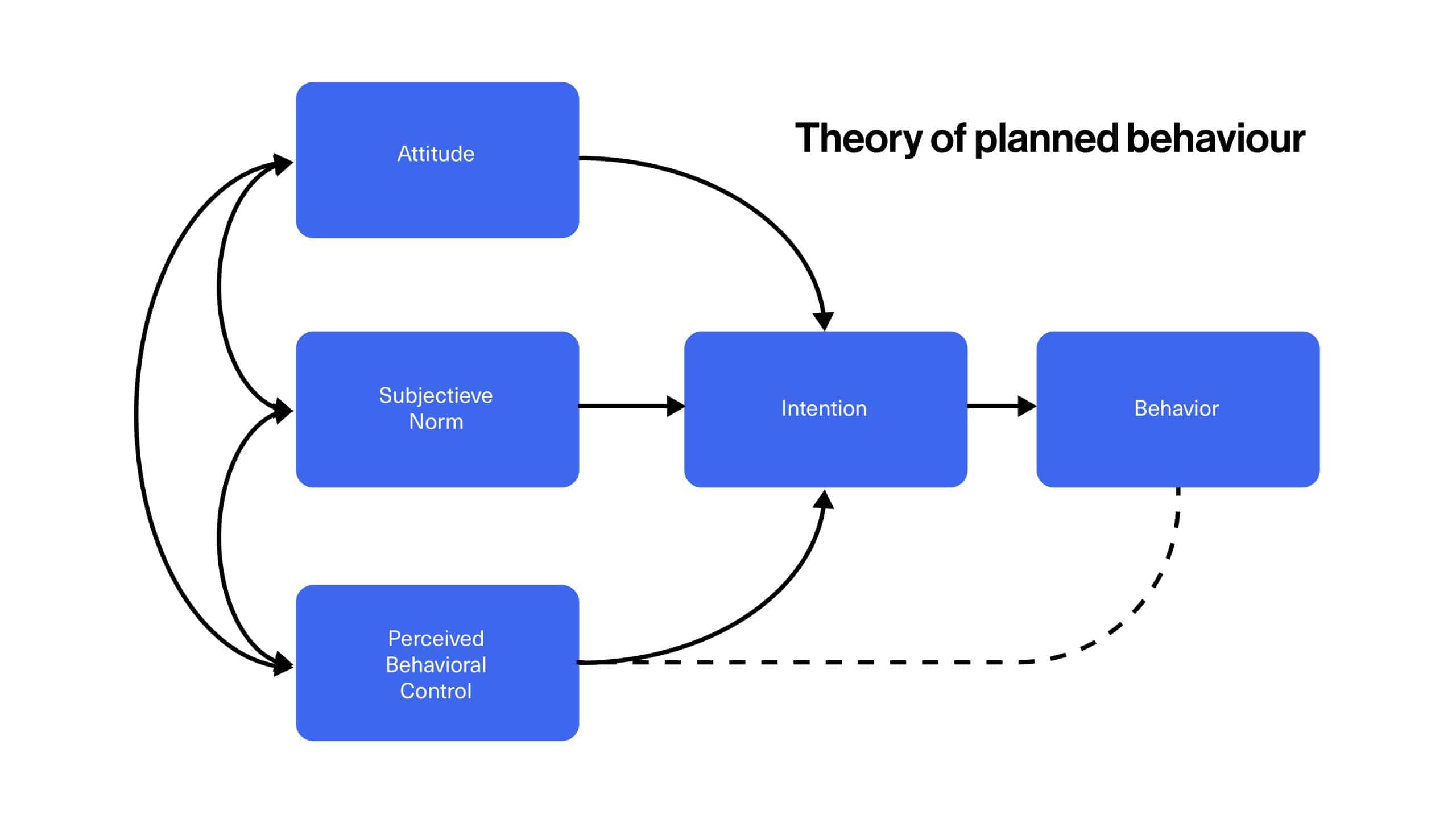
Theory of Planned Behaviour
The theory of planned behavior (TPB) is a cognitive theory by Azjen (1985) that proposes that an individual's decision to engage in a specific behavior, such as gambling or stopping gambling, can be predicated by their intention to engage in that behavior (Fig. 1). "Intentions are assumed to capture the motivational factors that influence.

The theory of planned behaviour. Download Scientific Diagram
The Theory of Planned Behavior (TPB) is a social psychological theory that explains human behaviour by considering the interplay of behavioural, normative, and control beliefs. It was first proposed by Icek Ajzen in 1991, and has been widely used in various fields to understand and predict human behaviour. According to the TPB, behaviour is.

Theory of planned behavior Download Scientific Diagram
The Theory of Planned Behavior (TPB), developed by Ajzen [20], is one of the most applied theories in the social and behavioral sciences. TPB was intended to predict and explain a wide range of.

Theory of planned behavior model. Download Scientific Diagram
Ajzen (1985) extended the theory and proposed a component to TPB, namely, that perceived control was needed to perform a behavior. With this model, the boundary condition of simple volitional control specified by TRA is extended (Madden et al., 1992).In contrast, the factors that affect the behaviors of individuals, which are the measures of control beliefs and perceived behavioral control.
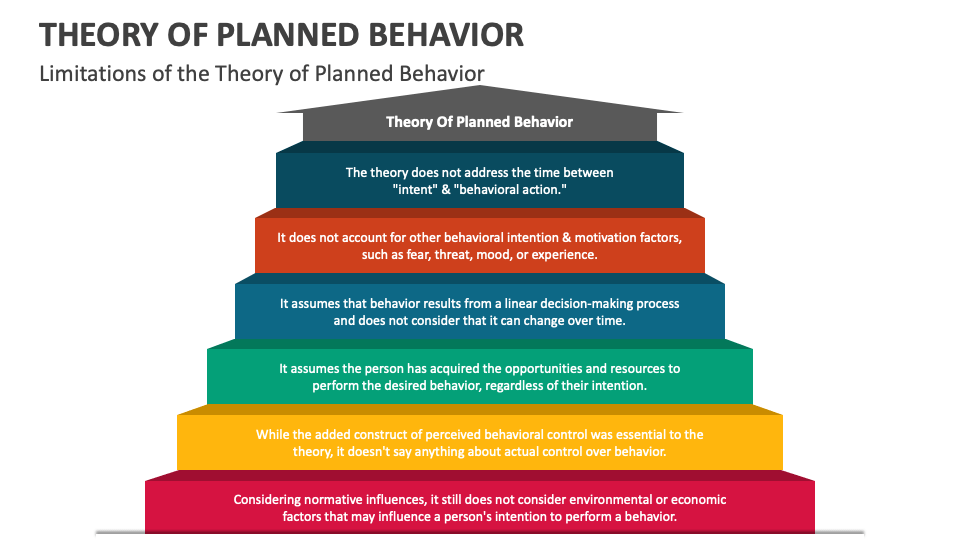
Theory of Planned Behavior PowerPoint and Google Slides Template PPT Slides
The theory of planned behavior (TPB) is a psychological theory that links beliefs to behavior. The theory maintains that three core components, namely, attitude, subjective norms, and perceived behavioral control, together shape an individual's behavioral intentions. In turn, a tenet of TPB is that behavioral intention is the most proximal.

Theory of planned behavior (Ajzen, 1991) Download Scientific Diagram
Predicting Behavior: Intentions and Perceived Behavioral Control The theory of planned behavior is an extension of the theory of rea- soned action (Ajzen & Fishbein, 1980; Fishbein & Ajzen, 1975) made necessary by the original model's limitations in dealing with behaviors over which people have incomplete volitional control.
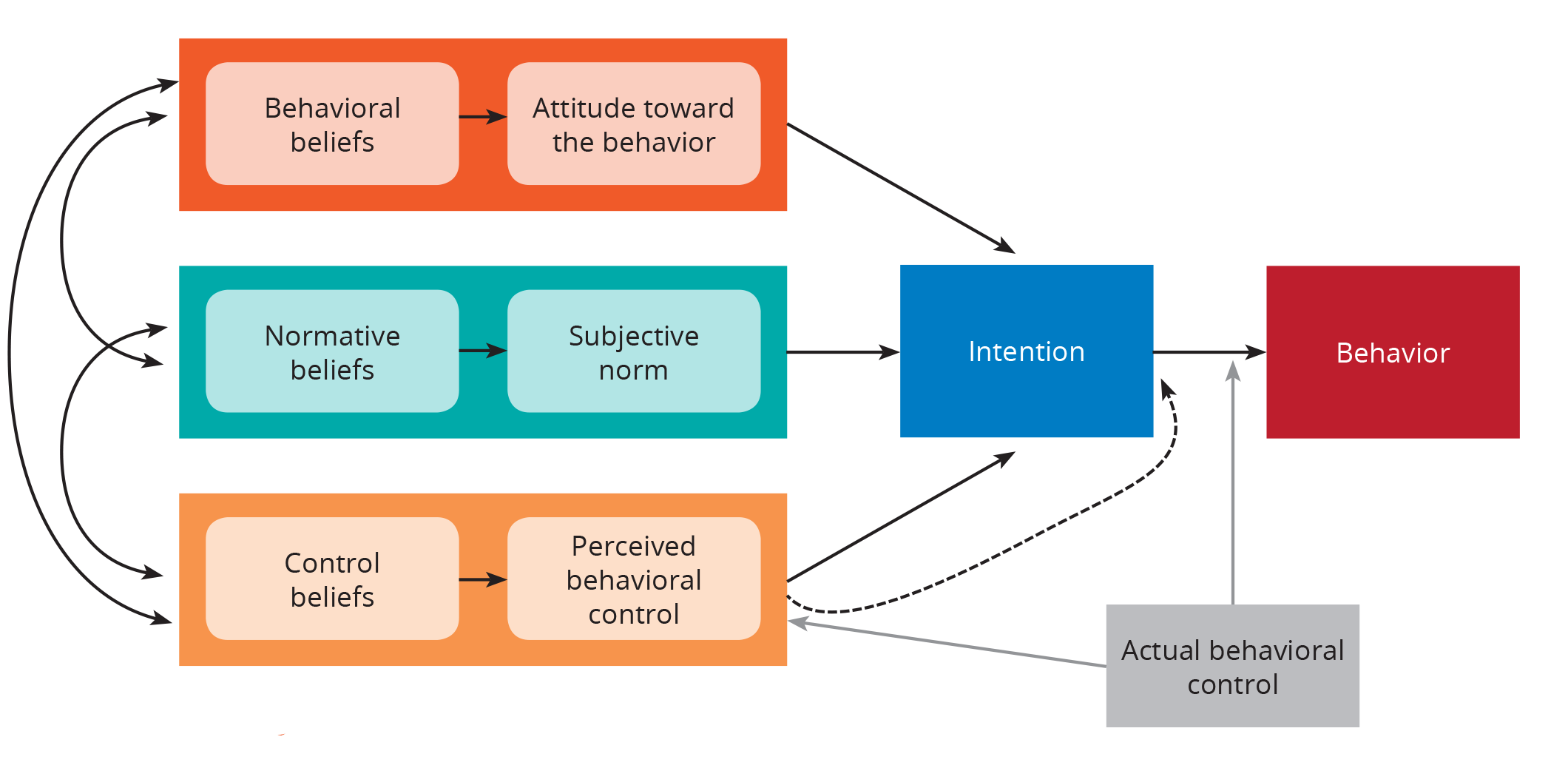
Urban Adolescent SRH SBCC Theory of Planned Behavior
2. Overview of the Common Health-Related Behavioural Change Theories . Many psychological theories and models attempt to explain the relationship between people's thoughts, beliefs, decisions, and behaviours; however, not all are unconditionally helpful, health-related, or, in fact, evidenced-based [].Additionally, numerous theories have been criticised based on their (in)effectiveness and.

Theory of Planned Behavior PowerPoint Template PPT Slides
Abstract. The Theory of Planned Behavior was developed to explain human behaviors. The theory has been broadly applied to health-related behaviors in nursing science but has not been examined in depth based on a critical nursing framework. This article systematically analyzes and evaluates the theory based on Fawcett and DeSanto-Madeya's 2013.

The framework of the Extended Theory of Planned Behavior Download Scientific Diagram
An extension of the theory of reasoned action (TRA; Fishbein and Ajzen 1975; Ajzen and Fishbein 1980), the theory of planned behavior (TPB) was developed by Icek Ajzen (1985, 1991) as a general model to predict and explain behavior across a wide range of different types of behaviors.A key assumption in the TRA is that behaviors are under one's volitional control.
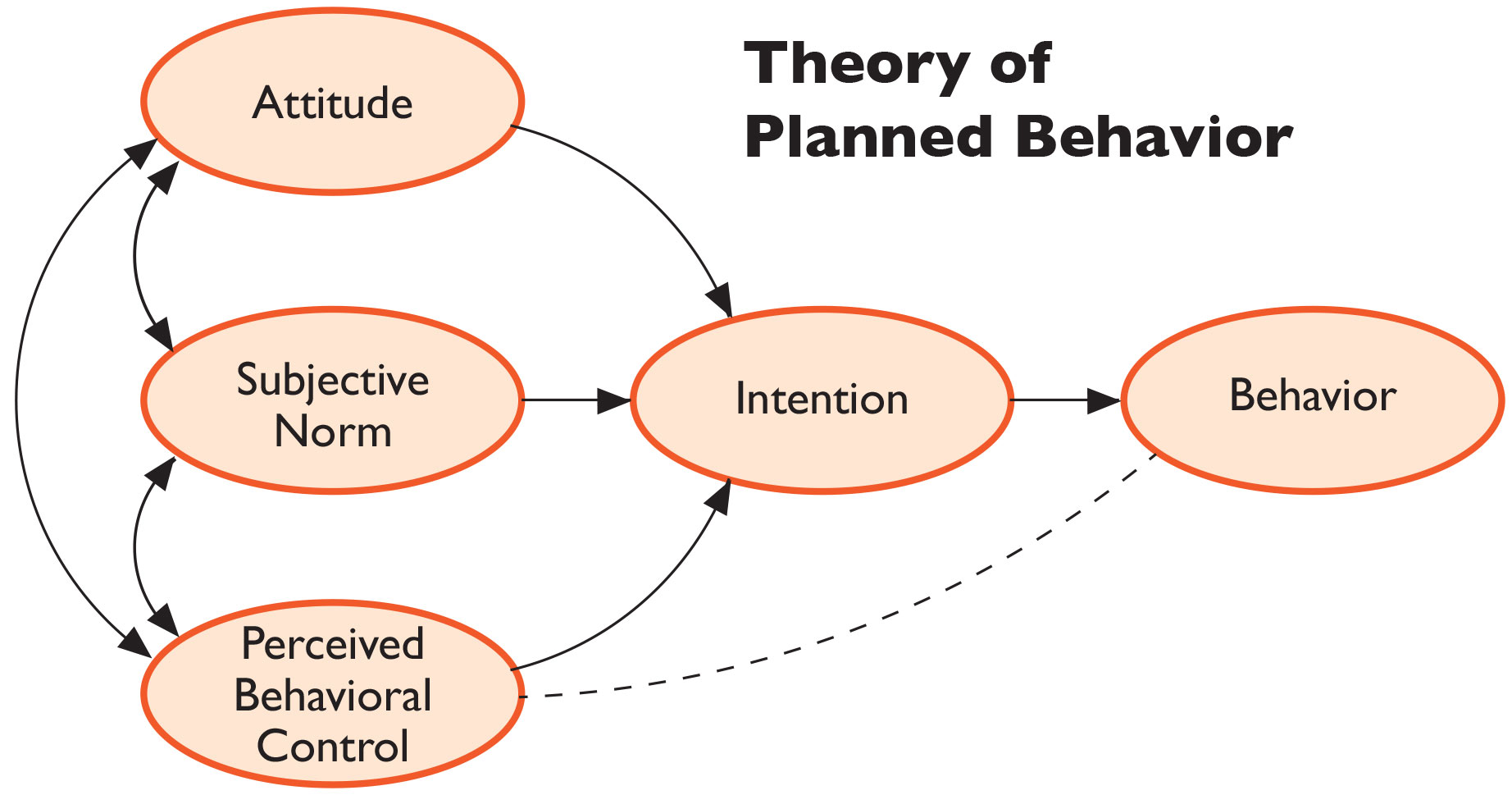
theory of planned behavior
Introduction. Since its introduction 26 years ago (Ajzen, Citation 1985), the theory of planned behaviour (TPB; Ajzen, Citation 1991, in press) has, by any objective measure, become one of the most frequently cited and influential models for the prediction of human social behaviour.Its popularity is revealed by conducting a Google Scholar search for the keyword 'theory of planned behavior OR.
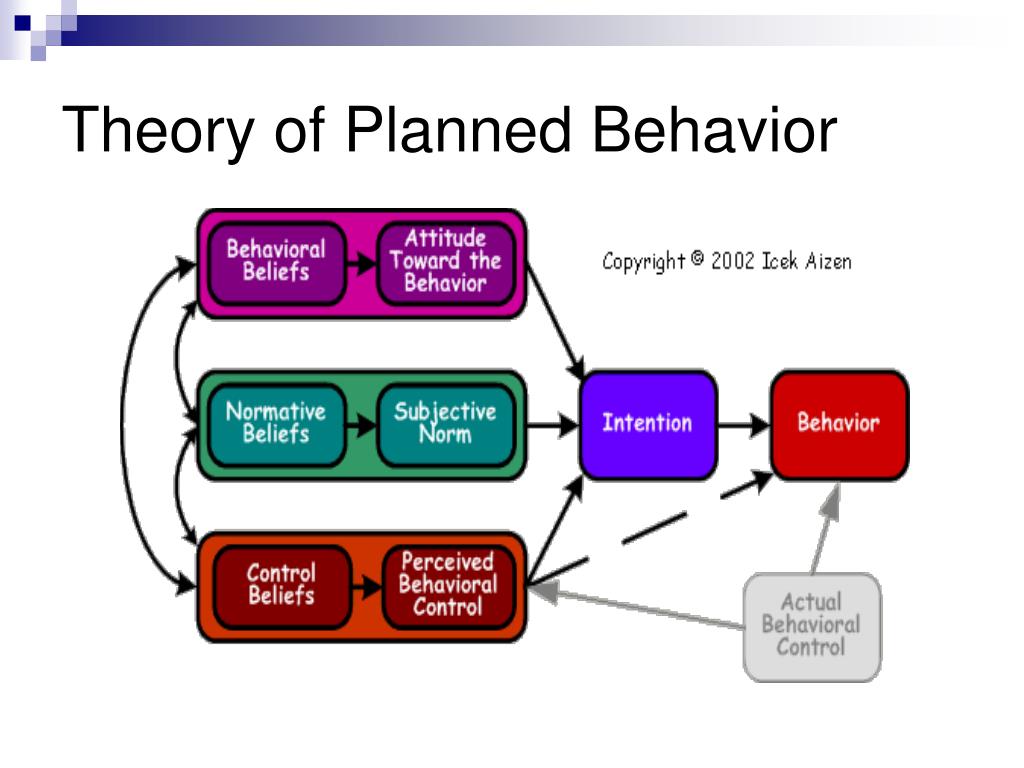
Ppt The Theory Of Planned Behavior And Reasoned Action Powerpoint D82
the theory of planned behavior deals with the antecedents of attitudes, subjective norms, and perceived behavioral control, antecedents which in. the final analysis determine intentions and.

THEORY OF PLANNED BEHAVIOR Explained How to Predict Behavior YouTube
The theory of planned behavior (TPB—Ajzen, Organizational Behavior and Human Decision Processes, 1991, 50, 179-211; Ajzen, Handbook of theories of social psychology, 2012, 1, 438-459) has been widely applied to the prediction and change of behavior, including behavior related to the use of technology.
- Saint Michael S Mount Mont Saint Michel
- Ik Zag Twee Beren Variaties
- Chantals Pyjama Party 2023 Terugkijken
- Hoeveel Boeken Heeft Sanne Rooseboom Geschreven
- Wat Voor Taal Spreken Ze In Luxemburg
- Harry Potter Singapore Universal Studios
- Raspberry Pi System Monitor Web
- Who Is The Best Bass Player
- C Reactive Protein Crp Waarde
- Delft Center For Systems And Control